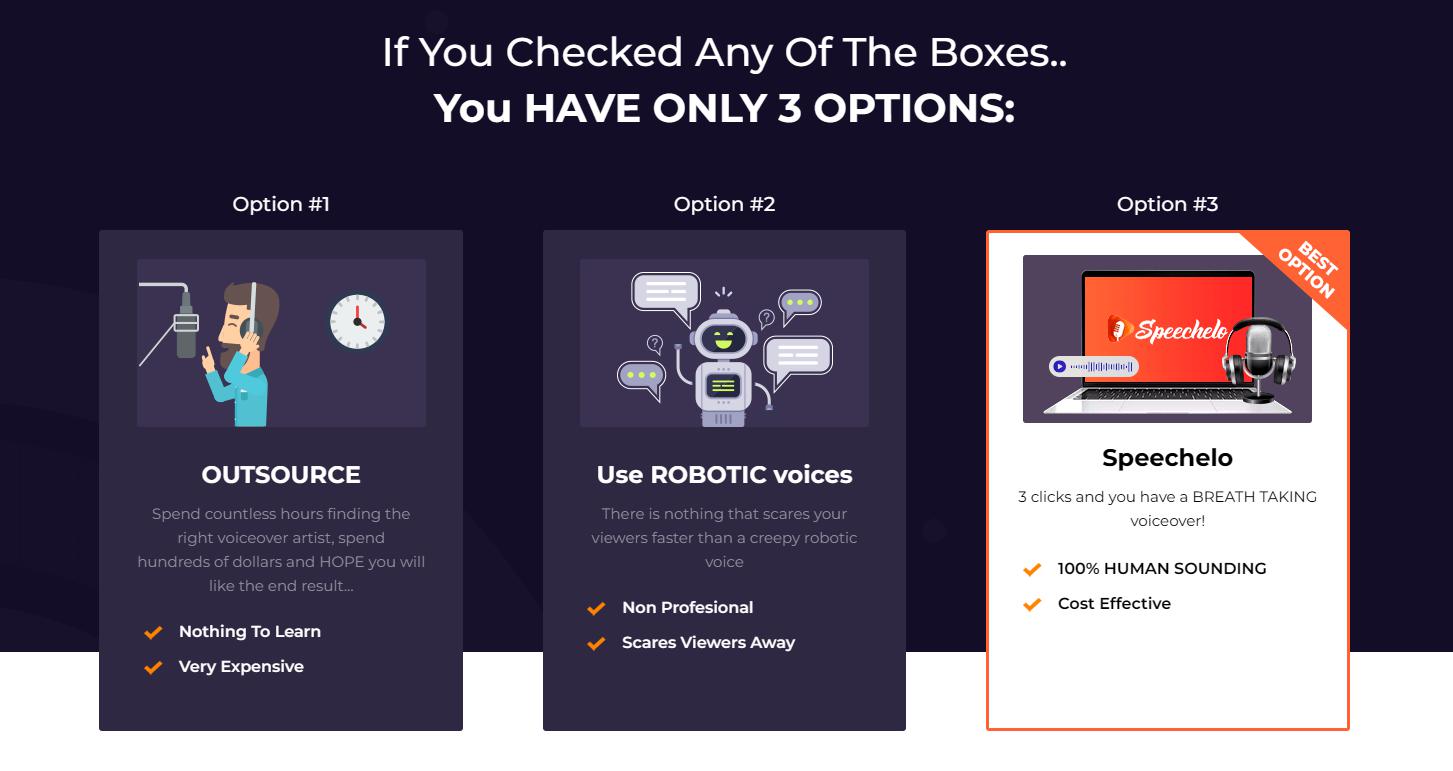How does text-to-speech software work in USA – 2024? | Best text-to-speech voice character tool! (Click Here)
Content Table
In today’s fast-paced digital world, the ability to convert written text into spoken words has become increasingly valuable.
Text to Speech (TTS) software has revolutionized the way we consume and interact with information, making it more accessible and convenient for users across various industries and applications.
As we look towards 2024 in the United States, Text to Speech (TTS) technology continues to evolve, offering increasingly natural-sounding and human-like voices, improved accuracy, and a wider range of use cases.
From enhancing accessibility for individuals with visual impairments or learning disabilities to enriching multimedia experiences and enabling hands-free interaction with digital content, Text to Speech (TTS) software has become an integral part of our daily lives.
As we delve deeper into this article, we will explore the intricacies of how Text to Speech (TTS) software works, its various applications, and the factors that influence the quality of synthesized speech.
Additionally, we will provide insights into selecting the right Text to Speech (TTS) solution for your specific needs, ensuring a seamless and effective implementation in the ever-evolving digital landscape.
Understanding the Basics of Text to Speech
Text to Speech, also known as speech synthesis, is the process of converting written text into spoken language.
This technology uses complex algorithms and models to analyze the input text, interpret its meaning, and generate corresponding audio output.
The entire process can be broken down into several key stages:
- Text Normalization: The software first pre-processes the input text, handling abbreviations, numbers, and special characters to ensure they are pronounced correctly.
- Text Analysis: The normalized text is then analyzed to determine the appropriate pronunciation, stress patterns, and intonation based on the language rules and context.
- Phonetic Conversion: The analyzed text is converted into a sequence of phonetic units, which represent the individual sounds that make up the spoken words.
- Prosody Modeling: The software applies prosodic features, such as pitch, duration, and emphasis, to the phonetic sequence, aiming to produce more natural-sounding speech.
- Speech Synthesis: Finally, the processed data is fed into a speech synthesizer, which generates the actual audio output using various techniques, such as concatenative synthesis or statistical parametric synthesis.
Advancements in Text to Speech Technology
Over the years, Text to Speech (TTS) technology has undergone significant advancements, driven by the progress in machine learning, natural language processing, and speech synthesis algorithms.
Some of the notable developments in recent years include:
- Neural TTS: The use of neural networks and deep learning techniques has significantly improved the naturalness and quality of synthesized speech, making it more human-like and expressive.
- Multi-Speaker and Voice Cloning: Text to Speech (TTS) systems can now generate a wide range of voices, including the ability to clone and mimic specific individuals’ voices with high accuracy.
- Emotional and Expressive Speech: Advanced Text to Speech (TTS) systems can convey various emotional states and speaking styles, such as happiness, sadness, or excitement, adding more realism and engagement to the generated speech.
- Multilingual Support: With improved language models and data availability, Text to Speech (TTS) software can now support a diverse range of languages, making it more accessible to users worldwide.
Applications of Text to Speech Software
The applications of Text to Speech software are vast and diverse, spanning across various industries and domains.
Here are some prominent use cases:
Accessibility & Assistive Technologies
Text to Speech (TTS) technology plays a crucial role in making digital content accessible to individuals with visual impairments, learning disabilities, or reading difficulties.
Screen readers, audiobooks, and other assistive technologies heavily rely on (TTS) to convey written information in an audible format.
Education and E-Learning
Text to Speech (TTS) software can enhance the learning experience for students by providing auditory reinforcement of written materials, making it easier to comprehend and retain information.
It can also be used to create interactive educational content, such as audio lessons or language learning applications.
Multimedia and Entertainment
Text to Speech (TTS) technology is widely used in multimedia applications, including audio narration for videos, podcasts, and audiobooks.
It also finds applications in gaming, where it can enhance the immersive experience by providing character dialogues and narration.
Automotive and Voice Assistants
Many modern vehicles integrate Text to Speech (TTS) systems to provide audible navigation instructions, read incoming messages, or deliver other important information to drivers.
Additionally, virtual assistants like Siri, Alexa, and Google Assistant heavily rely on TTS to communicate with users.
Business and Professional Use Cases
Text to Speech (TTS) software can be utilized in various business scenarios, such as generating audio versions of reports, presentations, or documents, enabling hands-free interaction with digital content.
It can also be used for automated call centers, voice-enabled applications, and corporate training materials.
Factors Influencing Text to Speech Quality
While Text to Speech (TTS) technology has advanced significantly, the quality of the generated speech can vary based on several factors:
- Language and Accent Support: The accuracy and naturalness of the synthesized speech can be influenced by the language and accent being used, as well as the quality of the underlying language models and data.
- Voice Quality and Expressiveness: Higher-quality Text to Speech (TTS) systems can produce more natural-sounding and expressive voices, while lower-quality systems may sound robotic or monotonous.
- Context Awareness: Advanced Text to Speech (TTS) systems can better understand and convey the contextual meaning of the input text, resulting in more accurate pronunciation and intonation.
- Specialized Domains: Text to Speech (TTS) performance can vary across different domains or subject areas, with some systems performing better for specific types of content, such as technical or medical terminology.
Considerations for Choosing a Text to Speech Solution
When selecting a Text to Speech (TTS) solution, it is essential to consider the specific requirements and use case.
Here are some key factors to consider:
- Voice Quality and Naturalness: Evaluate the quality and naturalness of the synthesized voices, as well as the range of available voices and accents.
- Language Support: Ensure that the Text to Speech (TTS) system supports the languages and dialects required for your application.
- Integration and Compatibility: Assess the compatibility of the Text to Speech (TTS) solution with your existing systems, platforms, and development frameworks.
- Customization and Control: Determine if the Text to Speech (TTS) software allows for customization of voice parameters, such as pitch, speed, and emphasis, to better suit your needs.
- Performance and Scalability: Consider the performance and scalability requirements, especially for high-volume or real-time applications.
- Cost and Licensing: Evaluate the pricing models, licensing options, and overall cost-effectiveness of the (TTS) solution.
Speechelo: AI-Powered Text to Speech Solution
One of the leading Text to Speech (TTS) software solutions in the market is Speechelo, an AI-powered platform that offers a wide range of features and capabilities.
Speechelo leverages advanced neural Text to Speech (TTS) technology to generate natural-sounding speech outputs in various languages and voice styles.
Some key features of Speechelo include:
- Multilingual Support: Speechelo supports over 30 languages and a wide range of accents, making it suitable for global audiences.
- Customizable Voices: Users can choose from a diverse selection of male and female voices, each with unique personalities and characteristics.
- Emotional Intelligence: Speechelo’s AI can analyze the sentiment and emotional context of the input text, enabling it to modulate the speech output accordingly.
- Voice Cloning: The platform offers voice cloning technology, allowing users to create synthetic voices that mimic specific individuals.
- Integration Options: Speechelo provides easy integration options with various platforms and applications, making it a versatile solution for a wide range of use cases.
- Scalability and Performance: Built on a robust and scalable architecture, Speechelo can handle high-volume requests while maintaining consistent performance.
By leveraging Speechelo’s advanced text to speech capabilities, businesses, content creators, and individuals can enhance their content delivery, improve accessibility, and provide a more engaging and personalized experience for their audiences.
Speechelo
Conclusion
As we move towards 2024, Text to Speech (TTS) technology continues to evolve, offering more natural-sounding and human-like voices, improved accuracy, and a wider range of applications.
From accessibility and education to entertainment and business, Text to Speech (TTS) software has become an integral part of our digital landscape, enabling us to consume and interact with information in more convenient and engaging ways.
While choosing the right Text to Speech (TTS) solution can be challenging, considering factors such as voice quality, language support, context awareness, and domain-specific performance can help ensure a seamless and effective implementation.
As technology continues to progress, we can expect to see even more advancements in Text to Speech software, further enhancing our ability to communicate and consume information in new and innovative ways.
Frequently Asked Questions
(TTS) stands for Text to Speech, which is the process of converting written text into spoken language.
TTS software uses algorithms and models to analyze text, interpret meaning, convert to phonetic units, apply prosodic features, and synthesize speech.
Concatenative synthesis and statistical parametric synthesis.
Yes, advanced Text to Software can convey emotions by modulating prosodic features.
Language support, voice quality, context awareness, domain-specific performance.
Consider voice quality, language support, integration, customization, performance, cost.
TTS converts text to speech, while speech recognition converts speech to text.








